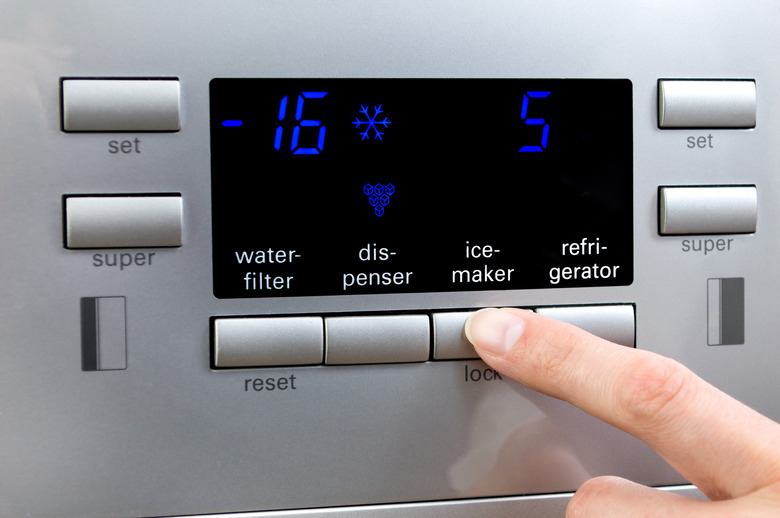The Auger In My Ice Maker Keeps Rusting
When the metal auger in an ice maker keeps rusting, it's time to replace the auger or even the entire ice bucket assembly. If you replace only the auger, and it's the same metal construction as the existing auger, a recurring rusting problem may be inevitable. You can also remove the rust from the auger and clean it, but this provides a temporary fix only.
Ice Maker Augers
Ice Maker Augers
An ice maker auger is the spiral-shaped part located in the ice maker bucket. When ice has formed and it's ready to leave the bucket, the auger rotates to move it forward. Although many newer augers are made of plastic, older ice makers have metal augers. These metal augers typically are chrome plated.
Rust on Metal Augers
Rust on Metal Augers
If the chrome plating on metal augers wears off, the metal underneath is exposed to air, becoming vulnerable to oxidation. Rusting is a form of slow oxidation, so a metal auger that loses its chrome plating will eventually rust. This chrome plating can become chipped away over time because of friction when pushing the ice cubes or even from hard water.
Stainless steel augers offer higher resistance to rust, but it's important to note that "stainless" does not mean "stain-free." The largest component of stainless steel is, of course, steel. And steel will rust if it loses its chromium oxide protective layer.
Plastic augers offer the highest measure of protection against rust compared with metal augers. Check with your refrigerator manufacturer or a refrigerator technician to find out if you can swap out your ice maker's rusted metal auger for a nonrusting plastic auger.
Removing Rust from Metal Augers
Removing Rust from Metal Augers
If your ice maker auger is stainless steel, and it contains only "surface rust" without being deeply pitted, you can remove the rust with a simple homemade cleanser. GE recommends making a paste with baking soda and water to remove the rust. You can also use a commercial cleanser that contains oxalic acid, which may more quickly remove the rust. If you use a baking soda paste, apply it with a soft cloth or gentle brush and thoroughly rinse the auger with a damp cloth when the rust is gone.
Keeping the Ice Maker Clean
Keeping the Ice Maker Clean
The filter on your ice maker traps crumbs, debris and some mineral deposits before these impurities make their way into ice cubes. And by trapping potential abrasives, such as grit and mineral deposits, which can damage the chromium plating, the filter may be able to mitigate the formation of rust. Changing the filter according to manufacturer recommendations helps keep the ice maker's parts clean, including the metal auger.
Cleaning the ice maker can also help keep a metal auger clean and prevent rust from forming, particularly when debris and other impurities find their way past the filter. Only clean your ice maker according to the directions in the user manual and be sure to unplug your refrigerator or turn off the circuit breaker that supplies power to the appliance before beginning this cleaning task.
Replacing an Ice Maker Auger
Replacing an Ice Maker Auger
Whether you have a GE Profile refrigerator ice maker that has a rusty auger or another appliance brand, replacing the auger is model-specific because of the different types of ice makers. Some auger replacements are simple, while others are challenging for do-it-yourselfers. Consult your user manual and call on a service technician if this task is outside your wheelhouse.
